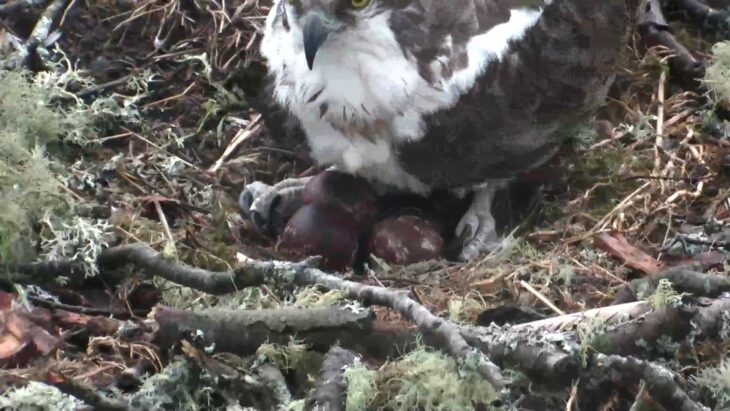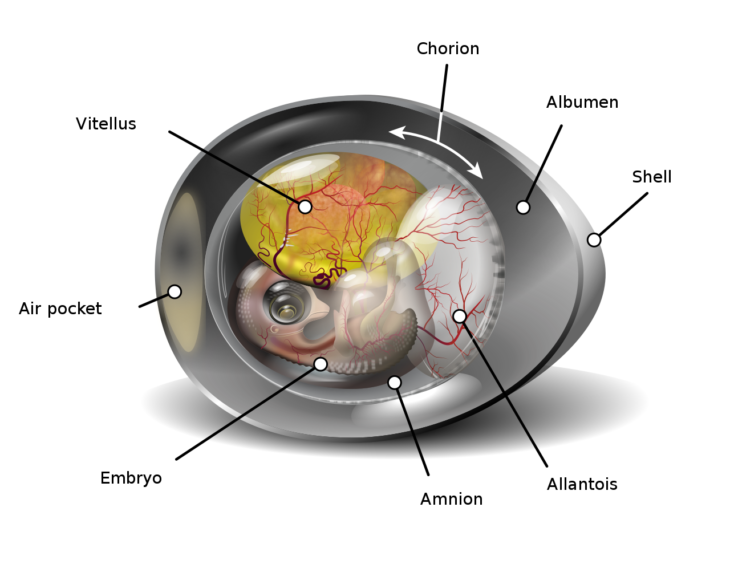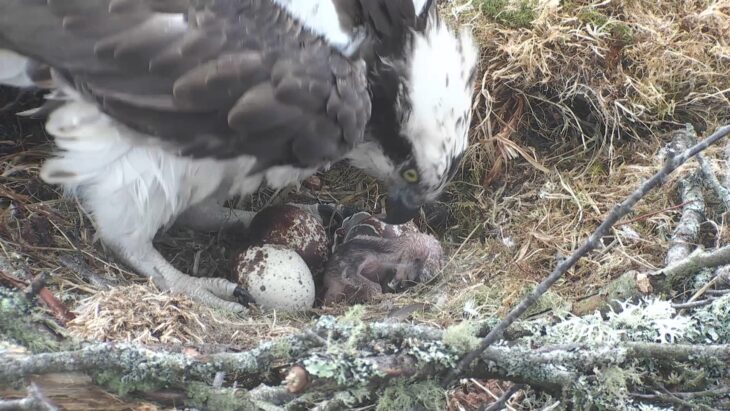Under The Shell
It has now been 28 days since the first egg was laid and life on the osprey nest has settled into a comfortable routine. Our resident osprey pair keep their nest well-guarded against intruders and the male delivers one or two fish to his mate every day. Occasionally, we get a quick peek at the eggs as LF15 or LM12 stand up to gently move the eggs around. From the outside, they appear the same as they did when they were first laid three weeks ago. Meanwhile, beneath the shell, an incredible transformation is taking place.

We’re so used to seeing chicken eggs in our supermarkets and fridges that they can seem very normal. It can be easy to forget that they are living things. These fragile yet self-sufficient containers have the ability to transform yolk into a chick within a few short weeks.
But how does this process work? There are a couple of crucial components that make up an egg and play an important role in the development of a chick.

Embryo: this is the developing bird, initially starting as a fertilized ovum which then develops into the embryo and finally the chick itself.
Amnion: the amnion is a membrane that surrounds the embryo. It is filled with amniotic fluid which provides a stable environment, acting as a shock absorber and protecting against any jarring impact or movement.
Vitellus: this is the yolk sac which provides a rich food source of fats and proteins for the growing embryo. As the embryo grows larger, the yolk reduces in size.
Albumen: the albumen is the white of the egg. It protects the yolk and provides additional nutrition – it is the main source of proteins for the growing chick. Proteins flow into the amniotic cavity, then into the yolk sac and finally the digestive tract of the embryo.
Allantois: the allantois grows out of the gut of the embryo. As the embryo grows, so does the allantois layer, storing waste products like uric acid. Eventually it presses against the chorion and these fuse together. Once fused, blood vessels in the layer allow for gas exchange of oxygen and carbon dioxide through the egg shell.
Chorion: this is the outermost membrane behind the egg shell. It encloses all of the other components of the embryonic system. The allantois fuses with the chorion to allow for gas exchange.
Air pocket: this develops as the embryo grows and fills with air. When the chick is ready to hatch, it will first break through into this air pocket. The hatching chick will depend on this small oxygen store to breathe as it breaks open the egg shell.
Egg shell: the main purpose of this layer is to protect the egg. The shell is covered in tiny pores which let in oxygen and moisture.

Hopefully the osprey eggs are undergoing this process right now, safely nestled between the warm body of their mother – or father – and the soft lining of the nest. To help with incubation, adult ospreys will develop a brood patch during the breeding season. The brood patch lacks down feathers, allowing for more efficient heat transfer to the eggs. They will also move the eggs around regularly to ensure that they are incubated evenly.
Jane Hamilton
Species Protection Officer
Help protect Scotland’s wildlife
Our work to save Scotland’s wildlife is made possible thanks to the generosity of our members and supporters.
Join today from just £4 a month to help protect the species you love.
Preface
It has now been 28 days since the first egg was laid and life on the osprey nest has settled into a comfortable routine. Our resident osprey pair keep their …
